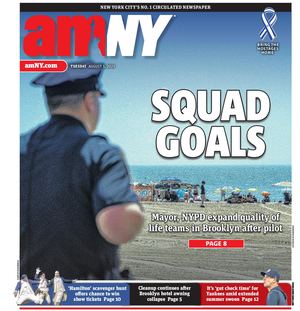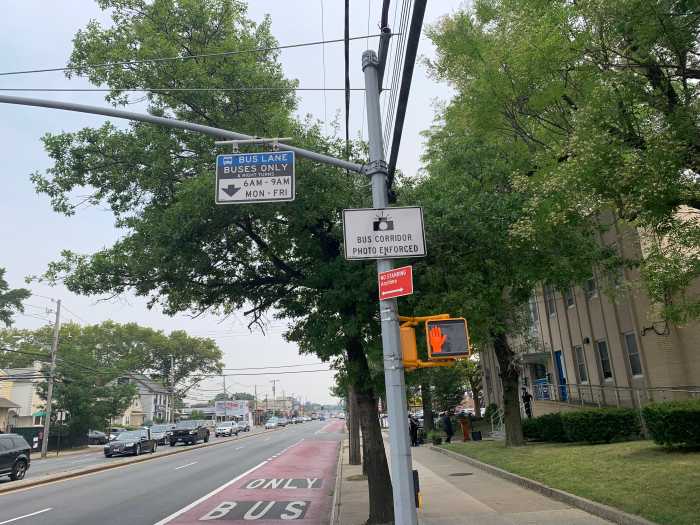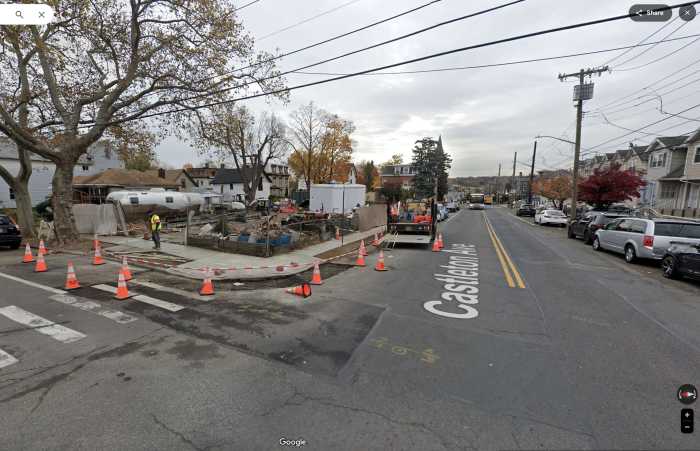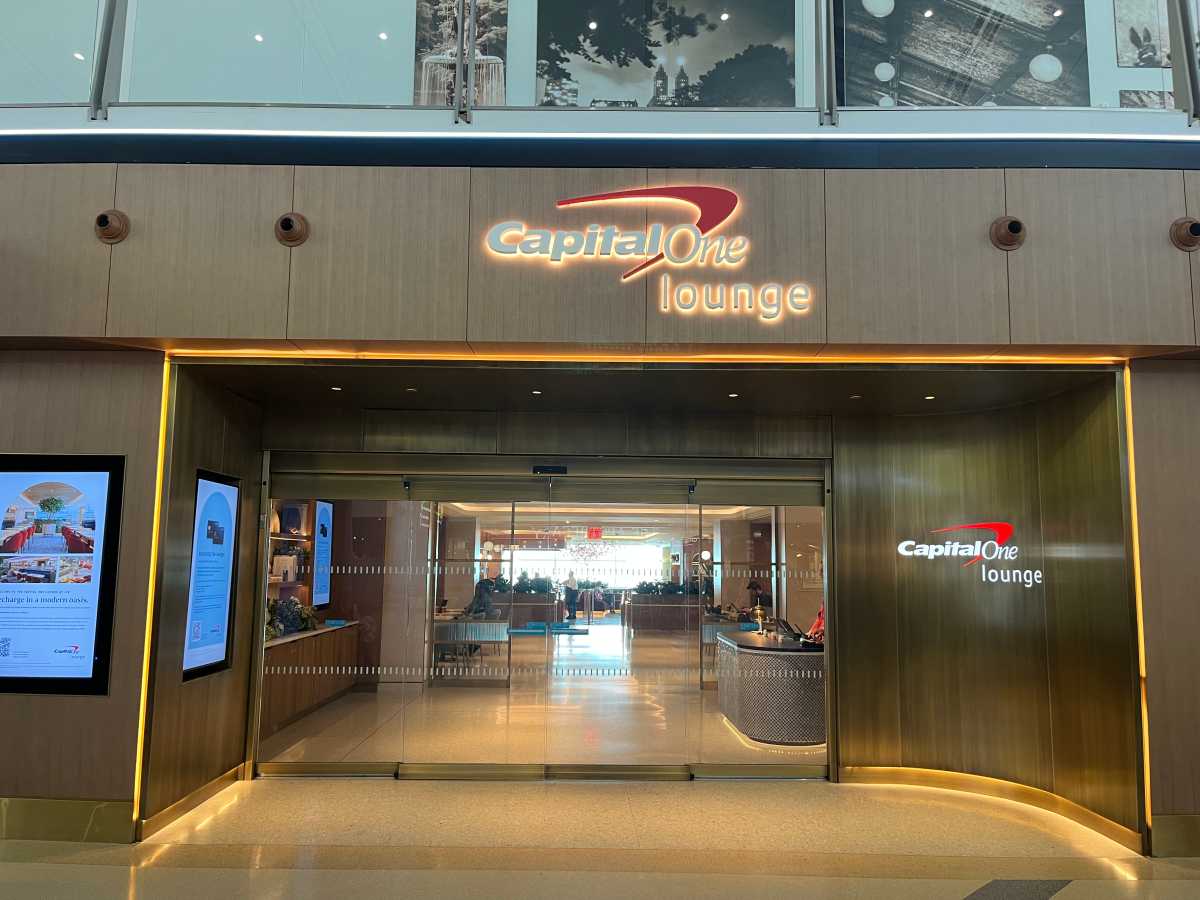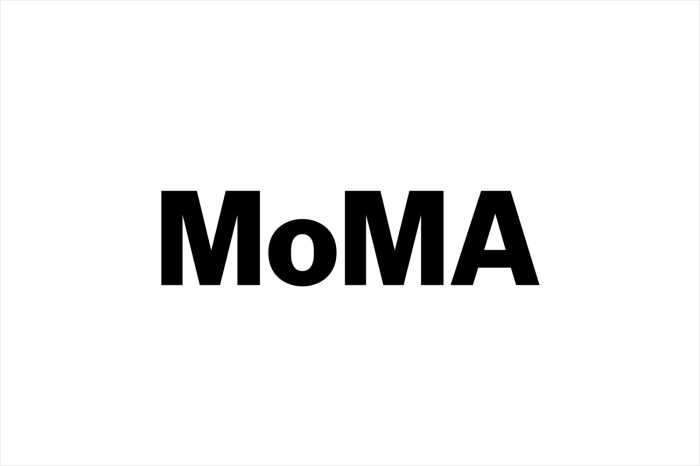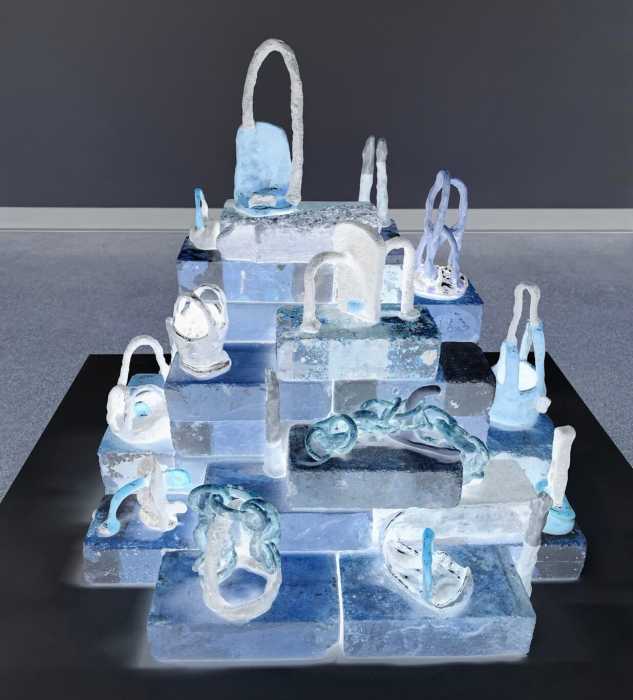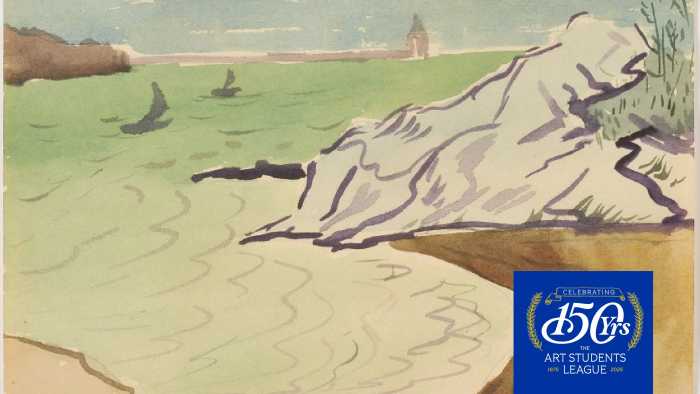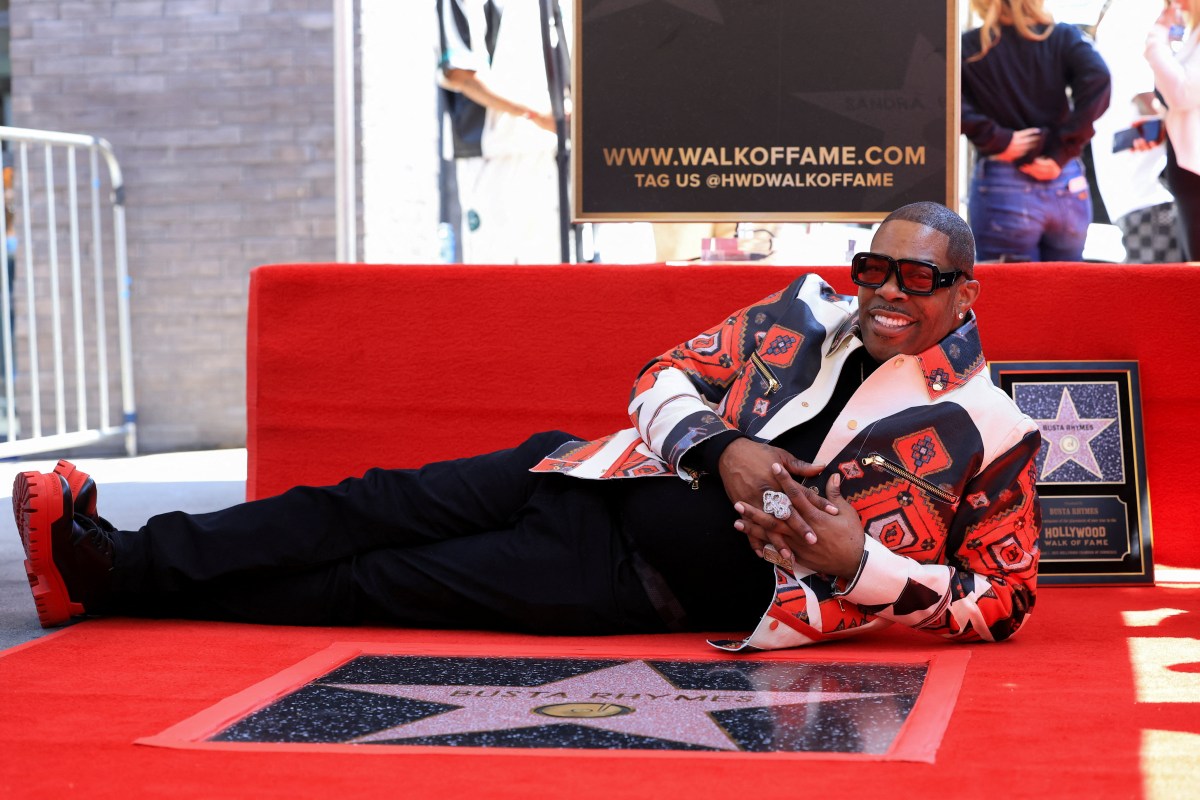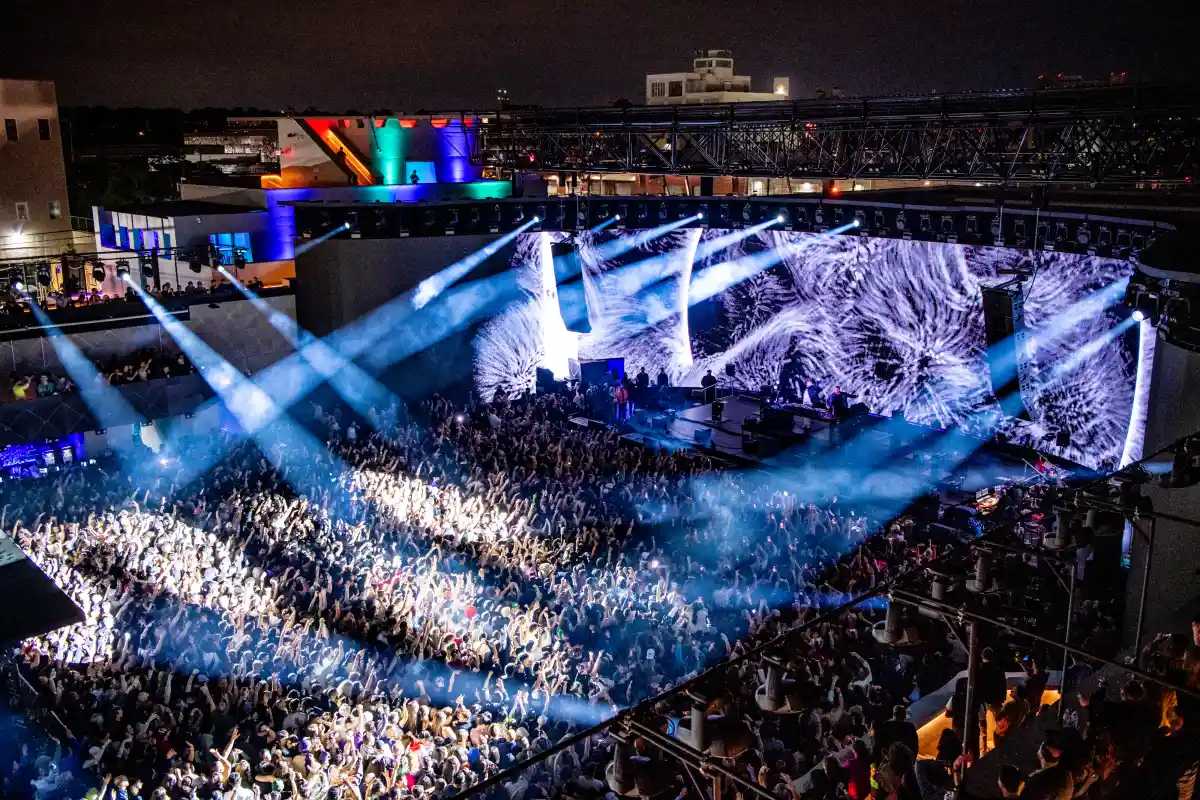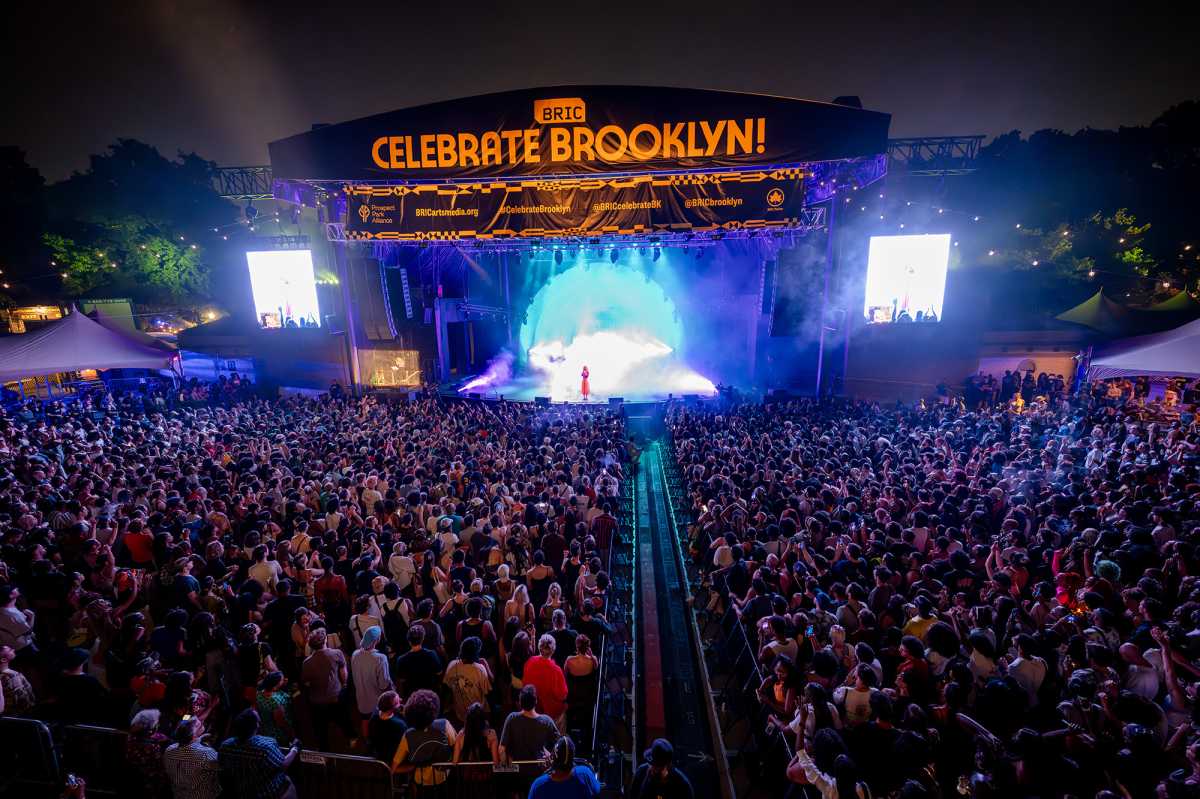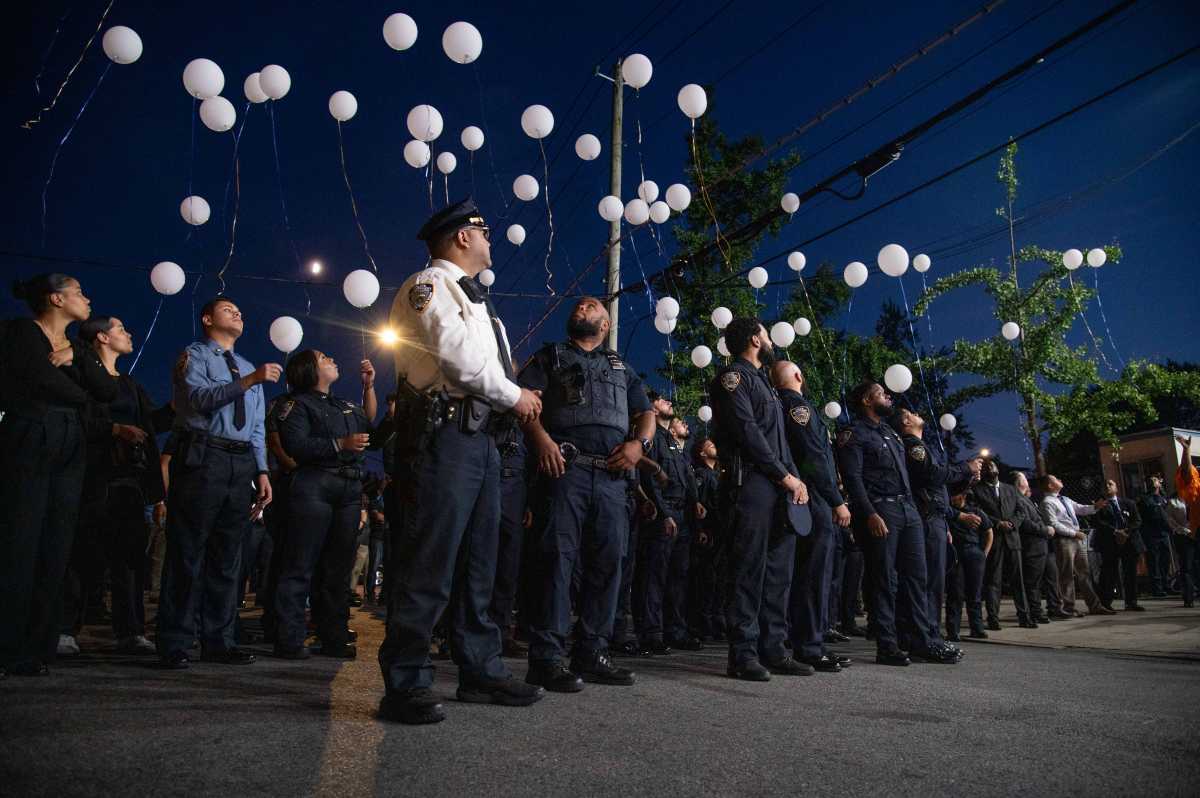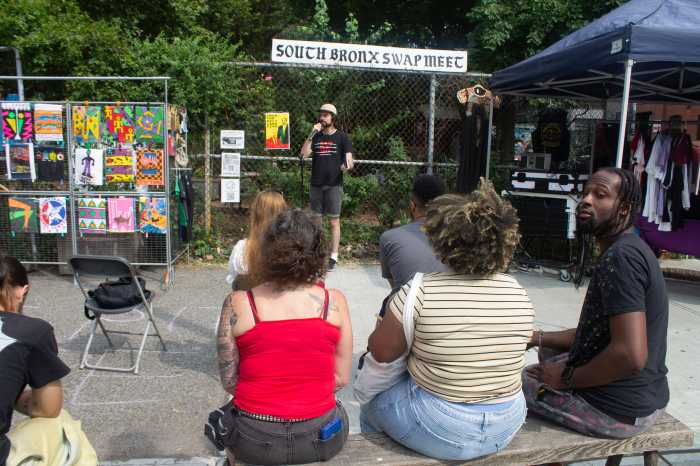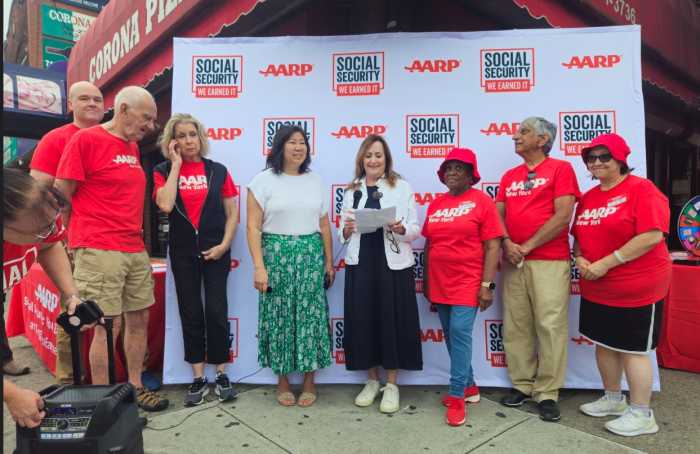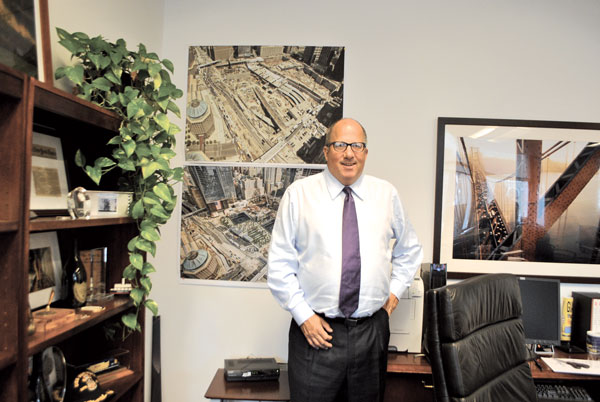 [/media-credit]
[/media-credit]
- Chris Ward pointed at two areial photos hanging in his office when asked about his most significant achievement as chief of the Port Authority. The top photo shows the W.T.C. site in 2007 and below it, is a photo taken three years later.
BY ALINE REYNOLDS | The Port Authority of New York and New Jersey’s Executive Director, Chris Ward, who has been widely praised for expediting the redevelopment of the World Trade Center site, will be stepping down from his job next week and staying on as an advisor until the end of the year. Governor Andrew Cuomo announced last week that he will be replacing Ward with the governor’s own deputy secretary, Patrick Foye, who will take the helm on Nov. 1. The Downtown Express sat down with Ward last week and asked about his departure, his accomplishments and regrets at the Port Authority, and his opinions on the future of Downtown.
DE: You’ve been credited with stepping in and transforming a paralyzed construction site at the World Trade Center. On a local level, Community Board 1 recently passed a resolution asking Gov. Andrew Cuomo to keep you on as executive director. Why are you leaving? Was it your decision?
WARD: The Governor gave me the opportunity to complete perhaps the most important milestone, which was the completion of the [9/11] Memorial plaza. I’m grateful for him giving me that opportunity. Having done it, I think there’s a natural break in where we are now with the project. Any governor is going to want to have a relationship with the executive director when they’re facing a whole new set of challenges, and I think it’s entirely appropriate for the governor to do so.
DE: Last week, the Port Authority announced that you’re going to stay on until the end of the year in an advisory capacity. How did that come about?
WARD: It was in a conversation with the Governor’s office. As capable and as excellent as Pat Foye will hopefully be, I agreed that I would continue to provide guidance and continuity through the end of the year — ‘cause there are a lot of issues that still need to be managed actively.
DE: What were your major accomplishments as executive director of the Port Authority, in your opinion?
WARD: I’m most proud of what we were able to do [with respect to] the transformation of Downtown. I think the delivery of the [9/11] Memorial Plaza on the 10-year anniversary was a phenomenal moment for everybody to have a moment to reflect. And the Conde Nast deal is just a game changer for Downtown; I don’t think Conde Nast would have ever come Downtown if you had seen incompleteness, uncertainty, or risk.
DE: When Conde Nast announced that move, there was this sense of elation. People’s optimism in the real estate market has since faded, however. What happened there?
WARD: I think there was definitely a pause in the market, but I don’t think it’s lost. We’ve had the international markets and the bond markets get volatile, while jobs reports remain unfortunately flat. But I’m optimistic that it has flattened out, and I think Downtown has its own market now because of Conde Nast.
DE: What were your biggest setbacks while on the job?
WARD: One of the things I think about is the collapse of the market, and the loss of Merrill Lynch Downtown. I always wonder, [were] we always going to lose Merrill Lynch; or if we’d had them, would Merrill Lynch have been an anchor tenant early on? Also, I didn’t manage the toll and fare increase as well as I should have. But… this is a job that I’ve always loved, and I think I’ve really delivered on what I said I’d get done. It’s rare in life you can get that sense of accomplishment.
DE: You invariably saw “New York Post” Columnist Fredric Dicker’s article, which referred to an “explosive” financial audit that will show “ hundreds of millions of dollars of unnecessary spending” authorized by you to “accelerate the rebuilding of Ground Zero.” What is your response to this accusation?
WARD: There have not been any hundreds of millions of [dollars in] cost overruns on the Trade Center project, though we’ve been candid and public that we have pierced the contingency [funds] of the project. We’ve spent about $230 million of about $600 million [in] contingency, which is a sort of insurance policy for when things do cost more. But, there should be no surprises [about] the cost of this project — we have maintained our level of transparency and our level of reporting to the Governor’s office.
DE: What is your response, specifically, to the contention that the Port Authority has spent “extravagantly” on the redevelopment of the W.T.C.?
WARD: I would hate to think that anybody would characterize it as “extravagant.” That sounds like it’s superfluous or unnecessary. I would argue that that was money well-spent. I don’t think we could have gone by the 10-year anniversary with an incomplete [Memorial] Plaza. Now, I’ve also made clear publicly that, when we decided to build the plaza floor and the PATH ceiling first — [known as] the “top-down” strategy — almost three years ago, it came with some additional costs of around 75-to-100 million dollars.
DE: What will the purpose of the audit be, to your knowledge?
WARD: Well, let me make clear that, there hasn’t been an audit [yet]. The Port Authority Board of Commissioners, at the request of the governors, is going to conduct an audit of the agency. Their focus, which has been publicly acknowledged, will be on the prioritization of the capital plan following the recent toll and fare increase; and the way the Port Authority organizationally functions in terms of compensation, pensions, and benefits.
DE: When you stepped in, there was a perceived level of dysfunction, and the tensions between Silverstein, the city, and the Port Authority were placed in your lap. What was the pressure like during the first few months on the job?
WARD: The great thing is that I was completely naïve in terms of how many challenges there were going to be. I candidly thought, you know, there was going to be a little kind of shaping up of the organization. It was such a challenge that you didn’t even know you were doing it: that was the thing that was sort of fun and thrilling about it. There were long, long nights here. We were all working, you know, 16 hours a day and on weekends — not just me, but everybody around me. From the October 2008 roadmap [was released] forward, you could see a way out of the woods. I mean you had [Larry] Silverstein still out ahead of you, you still had the procurement questions about [whether] you were going to keep Phoenix Constructors [as the manager of the construction of the W.T.C. Transportation Hub]… but, after four months, I think you could sort of breathe a bit of a sigh of relief and say, “[I] really can manage this project.”
DE: Speaking of Silverstein, Mayor Mike Bloomberg originally wanted to remove the developer from the W.T.C. deal, arguing that he didn’t have enough money to complete it. But, while you negotiated with Silverstein, the Bloomberg administration actually did a complete 180, and came around in support of him. How do you account for that change on the Mayor’s part?
WARD: I think, born out of a legitimate sense of frustration, Bloomberg had reached a point where he thought, “How could you possibly leave this hole in my great city? Let’s just please get something done”— and that the Port Authority should really step up [so] that it didn’t remain unfinished. That put a lot of pressure on us, and it really changed the dynamic of the negotiation. At the time… the heat in the kitchen got pretty hot. But, hindsight’s a wonderful thing.
DE: How do you think the deal turned out?
I would characterize that deal — born out of the crucible of arbitration, negotiations, and politics — the best deal for both parties. It was, in a way, the pivotal moment in ensuring that Downtown had a bright future. Absent that deal, you wouldn’t have had that sense of the economic future of Downtown… and you would have not been able to deliver the [9/11] Memorial.
DE: Do you think the taxpayers got a good deal out of it?
WARD: Yes, because there’s enough in it which is market-based. It’s not so aggressive that it’s building Tower Two — but at same time, it’s ensuring that the taxpayers see economic activity stimulated by the deal that we did. I think it will generate dividends for the city, in terms of new taxes, for decades to come.
DE: What do you think the future is of the Lower Manhattan Construction Command Center?
WARD: I think the L.M.C.C.C. has some issues that they’re still working on, but… I think its role in terms of coordination has largely ended. The site is so well-managed now. Think back to how we were all freaking out about how on earth [we were] going to manage this; and now, to the enormous credit of the engineers and our partners, the logistics for building Downtown are almost seamless. The site is just humming perfectly — that steel miraculously shows up, the concrete goes up, and it’s not creating chaos in the streets.
DE: Construction might not be causing as much chaos Downtown as it used to, but congestion is — in part thanks to the one-way toll on the Verrazano bridge, which routes an enormous amount of truck traffic through Lower Manhattan and right back out the Holland Tunnel, saving drivers toll money but causing pollution and congestion in the densest part of New York. Can that ever be reversed?
WARD: I think it can, for two reasons. One: pre-E-Z pass, Staten Island had the double toll, which created the kind of double experience no one enjoys at the toll plaza. Now that you’re with E-Z pass, Staten Island doesn’t have the same kind of congestion headache. Second, I think you’re going to have to do it within that larger regionalization of the toll structure, so you don’t get just those sort of anomalies where trucks or even cars are driving around the system to avoid [the tolls].
DE: Switching gears completely, there’s this issue of the Performing Arts Center. At some point, C.B. 1 Chair Julie Menin and others wanted to see the center built in Tower 5. That proposal was rejected because of the Vehicle Security Center; and because the P.A.C. needed to remain at the originally proposed site, which is Site 1B. What do you think about the P.A.C.’s role in the W.T.C., and how can the Port Authority facilitate that project, moving forward?
WARD: I think [promoting] culture Downtown is an incredible goal. I leave it to Pat Foye if he thinks otherwise, but it’s clear from my perspective that this is not a Port Authority project. It’s clearly a city project. If you’re going to have a longterm, great P.A.C., stick with it and be patient, but don’t change horses and try to think you can get [a version of it] in Tower 5. The Port Authority is clearly following the city’s lead. And I think, as the mayor said, these are tough times, and someone’s going to have to raise an awful lot of money to fund the P.A.C.
DE: Speaking of Pat Foye, what do you think the biggest challenges are right now for your successor?
WARD: The market signs both here in the U.S. and around the world are difficult, and we need commercial tenants. I think that maintaining the momentum in face of this potential double-dip in the recession is going to be a challenge. Also, I think Pat and the Board will struggle with how you prioritize capital planning when you’re in a scarce resource enviroment. There’s still a huge infrastructure challenge out there within this region, and we need to have a public and political discourse on infrastructure within this town.
DE: What’s next for you?
WARD: Unfortunately, the reports that I have a job [lined up] aren’t true. I will say that the Port Authority is probably the best public sector job, I would argue, in the country. At this point, there is no other public sector job I could think of that I would like to do, so my hope is to find a meaningful job in the private sector.
DE: Are you actually considering running for mayor, or is that just a rumor?
WARD: At my age now, and [with] my total lack of any “political base,” if you will, or any real foundation that it takes to run for office, it’s flattering but highly unlikely that I would ever be able to run for mayor. Also, the likelihood of me ever being able to raise [the necessary] amount of money is impossible. At another time of my life and with some better planning and forward-thinking, I would have liked to have thought I could run for office — whether it was the mayor or some other public office. I will say — kind of immodestly, I guess — I think I’d be okay with it.
With reporting by John Sutter and John Bayles
